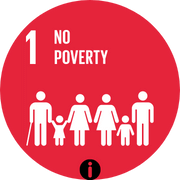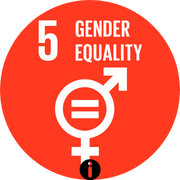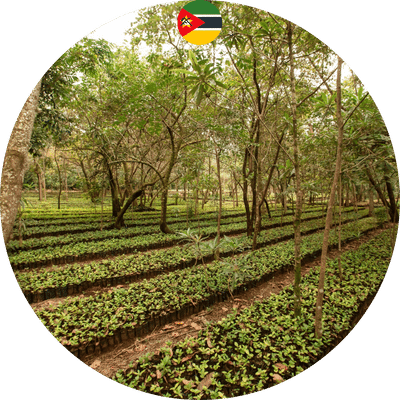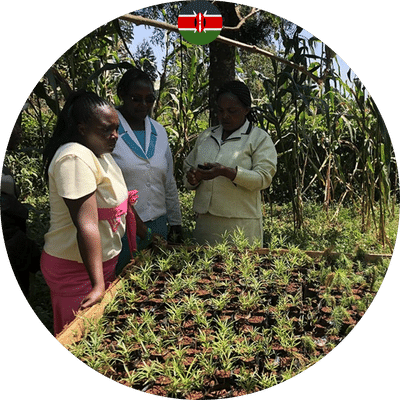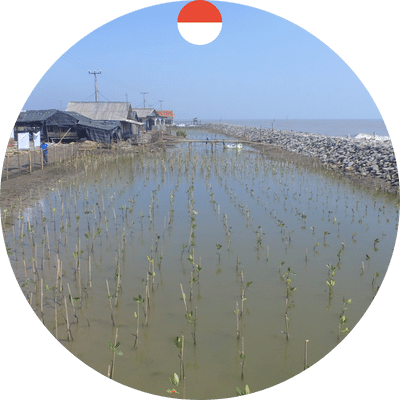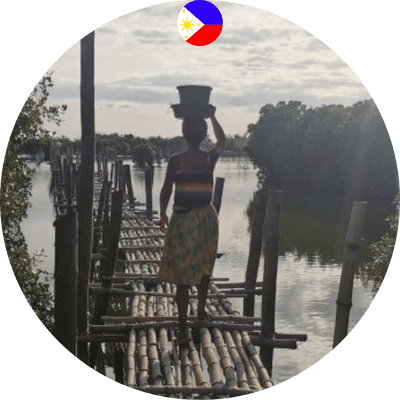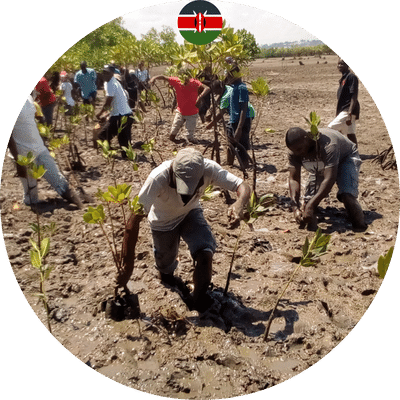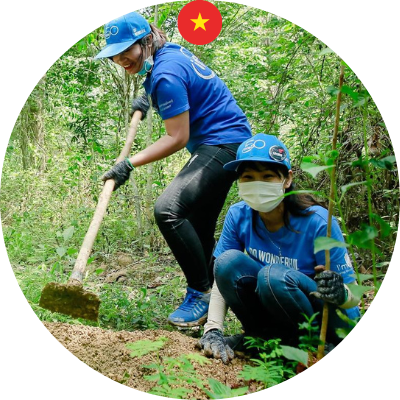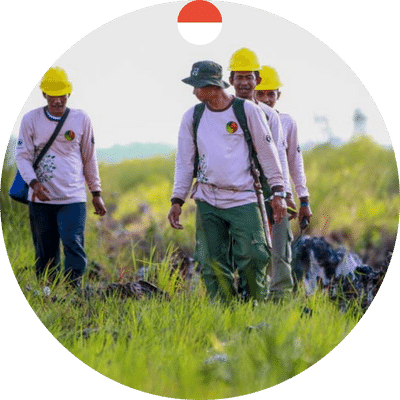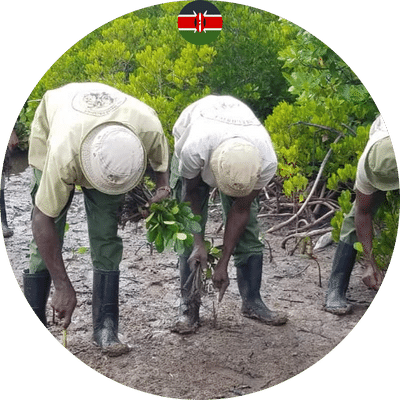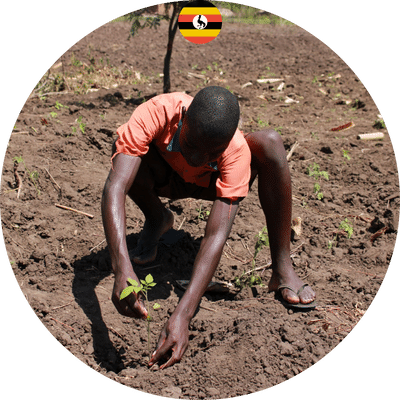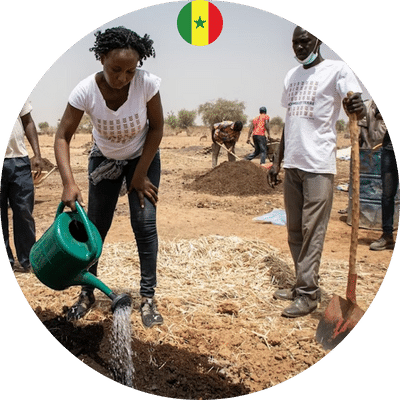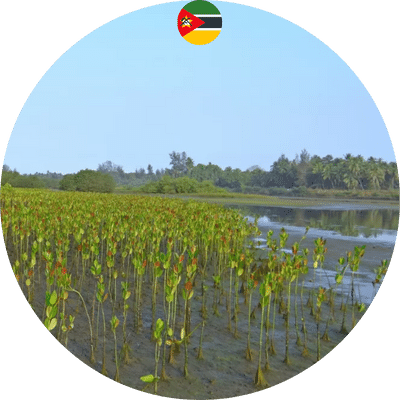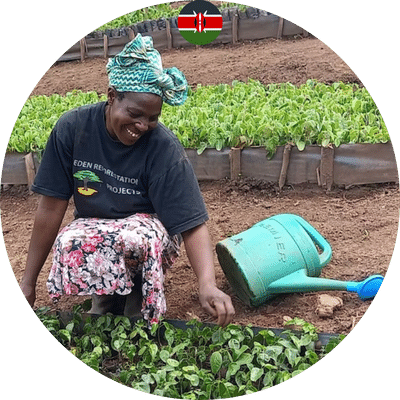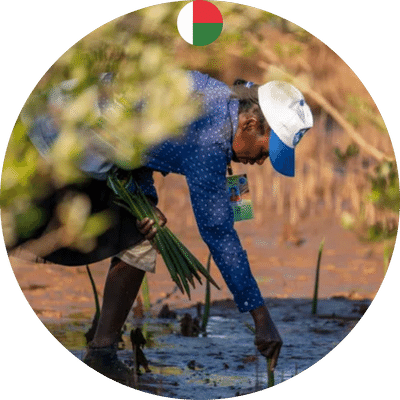Restoration of degraded land in Senegal
Situation and background
The Sahel region spans a distance of 5400 km from the Red Sea in the east to the Atlantic Ocean in the west. It is a climatic geographical area in Africa that lies between the Sudanese savanna in the south and the Sahara desert in the north.
The tropical, semi-arid environment makes it common for months to pass without precipitation. Recent years have seen an increase in the frequency of droughts, with the greatest one occurring in the Sahel region between June and August 2010, when exceptionally high temperatures and a lack of precipitation led to starvation and disease. The effects of climate change have worsened such catastrophic weather patterns. People in the Sahel are currently the most severely impacted by climate change, and their way of life is becoming more and more threatened.
Desertification is common in the Sahel region as a result of the hot, dry climate. The life that previously flourished on the land is disappearing, and the lush soil is turning to dust. Senegal’s low agricultural output is mostly caused by desertification and land degradation, which also contributes to poor food security, fewer job possibilities, and an increase in rural migration. While doing so, people are attempting to get employment and support themselves. According to Enda Energie, a Senegalese NGO, desertification has affected 34% of Senegal’s arable land, causing the loss of more than 30% of the nation’s forests.
Project location: Tambacounda, Senegal
Planting Partner
Hommes et Terre (H&T) is a private social profit company whose mission is to develop and implement large-scale reforestation and land management programs to guarantee the local population long-term access to sufficient fertile soil.
![]()
H&T’s strategy is based on a business win-win partnership with local communities. This helps improve long-term forest protection by instilling a sense of pride and promoting a deep understanding of the value of forests among local people.
A 30-year partnership agreement has been signed with the partner village, H&T, local authorities and the land registry. This protects the land and the project from damage from outside parties. These parties may commercially exploit the site if necessary, but the local community will retain ownership of the land.
People in the partner village involved in the project are paid by H&T for a variety of services, including seed collection, monitoring activities and supervision.
A village coordination is formed from village members to give the community a voice in the direction of the project; the coordination must consist of at least one woman. The coordination, local foresters, regional consultants and H&T’s field staff work together to ensure the organization needed to properly manage the project and the common good.
The project
This project will be located in the Tambacounda region of Senegal, in the municipality of Goudiry. This location is close to 20 existing partner villages of H&T in the Bakel and Goudiry regions – the team knows the area very well and has experience working with local people in this location.
In total, this project will restore 250 acres of degraded land. Spread across this area, 375,000 trees will be planted, consisting of at least 10 different species. The community will choose which species to plant, with their decisions often driven by the products of the trees they believe they can sell and earn a sustainable income from.
To keep the trees thriving in the right conditions, H&T is creating “half moons,” micro basins that hold water during the rainy season.
The trees planted in this project will contribute to both climate change adaptation and mitigation. They help villages adapt to the effects of climate change because they help improve soil and create resistance to drought. Agroforestry systems store CO₂ in trees and soil, shade crops, and create a microclimate.
After the first and third years after the start of the project, forestry monitoring reports will be prepared to assess the success of the project in terms of tree survival and health. In addition, H&T staff will interview village coordinators to learn more about the impact of the project from their perspective. Further, broader research will be conducted to better understand the socioeconomic impacts of the project on the local community and determine what remedial measures are needed to strengthen cooperation between H&T and the village.
You can check out the project on Restor here.
Sustainable Development Goals
When allocating our members’ funds, we’re committed to aiding in the Sustainable Development Goals set by the United Nations. Below are the SDGs acknowledged for this project.
💡 Click on the Icon to read follow the progress on each SDG.
Photos




Climate solution
Restoration of tropical forest.
Project Drawdown defines tropical forest restoration as the restoration and protection of forests with a tropical climate. This solution replaces degraded forest in the tropics.
It is estimated that 287 million hectares of degraded land in the tropics could be restored to continuous, intact forest. Due to the current and estimated commitments of the Bonn Challenge and the New York Declaration on Forests, our model assumes that restoration can occur on 161-231 million hectares.
By protecting currently degraded land and allowing natural regrowth, committed land could sequester 1.4 tons of carbon dioxide per hectare annually, for a total of 54.5-85.1 gigatons of carbon dioxide by 2050.
Read more on Drawdown.org



